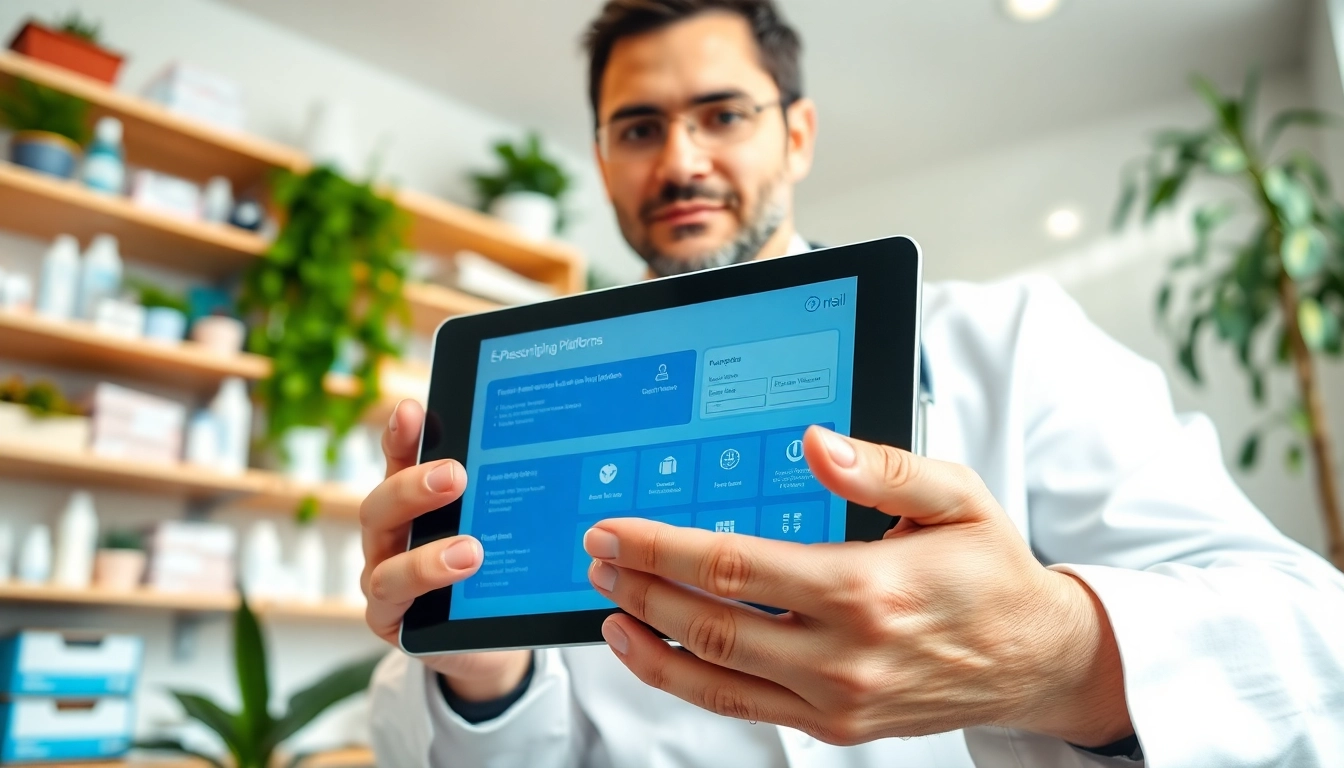Understanding Eprescription Apps for Android
In an era where technology continually reshapes the way we interact with healthcare, eprescription apps for android have emerged as a revolutionary solution for healthcare providers. These applications allow medical professionals to prescribe medications electronically rather than relying on traditional paper prescriptions, establishing a streamlined approach to patient care. This article will explore the intricacies of e-prescribing, its benefits, key features to consider, and essential steps for seamless implementation.
What are Eprescription Apps?
Eprescription apps are digital platforms designed to facilitate the prescribing process, enabling healthcare providers to send prescriptions directly to pharmacies via secure internet connections. By replacing the cumbersome paper prescription process, these applications significantly improve efficiency and accuracy. They are accessible on Android devices, providing convenience right at the fingertips of healthcare professionals. Moreover, these applications often integrate with electronic health record (EHR) systems to streamline workflows further.
Benefits of Using Eprescription Apps for Android
The transition from traditional prescribing methods to digital solutions offers numerous advantages:
- Enhanced Accuracy: Eprescription apps minimize human errors associated with handwriting or transcription, ensuring that pharmacies receive clear and accurate medication details.
- Increased Efficiency: Streamlined workflows reduce prescription turnaround times, allowing healthcare providers to focus on patient interaction rather than paperwork.
- Improved Patient Safety: These apps often have built-in checks for allergies and drug interactions, enhancing patient safety through real-time alerts.
- Cost Savings: E-prescribing can reduce administrative burdens and lead to fewer medication errors, ultimately lowering costs for practices and patients.
- Better Medication Management: Providers can track prescriptions, refills, and adherence more effectively, enabling proactive health management.
Key Features to Look For
When selecting an eprescription app, healthcare providers should consider the following features to maximize their effectiveness:
- User-Friendly Interface: Intuitive design and navigation are essential for quick adoption by healthcare staff.
- Integration Capabilities: The app should seamlessly integrate with existing EHR systems for synchronized patient data management.
- Real-Time Drug Interaction Checks: Built-in alerts can prevent potentially harmful drug interactions.
- Cloud-Based Access: Enables access from any device at any location, enhancing flexibility in prescribing.
- Reporting and Analytics: Data insights can help practices analyze medication trends and improve patient outcomes.
How Eprescription Apps Enhance Patient Care
Streamlining Prescription Processes
Eprescription apps revolutionize how prescriptions are managed, allowing healthcare providers to quickly generate and send prescriptions directly from their mobile devices. With features such as instant access to a medication database, providers can prescribe the right medication quickly and efficiently. This functionality drastically reduces wait times for patients at pharmacies and improves overall patient satisfaction.
Improving Medication Adherence
One of the most significant challenges in healthcare is ensuring that patients adhere to their medication regimens. Eprescription apps can play a pivotal role in addressing this issue by providing tools for reminders and follow-up communication. By sending notifications to patients about refills or scheduled medication times, these apps encourage adherence and enhance treatment outcomes.
Facilitating Better Communication
Effective communication between healthcare providers and patients is crucial for successful treatment outcomes. Eprescription apps enhance communication by allowing providers to share vital information with patients and pharmacies in real-time. This transparency ensures that all parties are aware of prescription details, potential side effects, and contraindications, fostering a collaborative approach to patient care.
Selecting the Right Eprescription App
Factors to Consider for Your Needs
Choosing the right eprescription app is pivotal for maximizing its benefits. Factors to consider include:
- Practice Size: Evaluate whether the app can accommodate the needs of your entire team.
- Specialization: Some apps are tailored for specific medical fields; choose one that aligns with your practice type.
- Compliance and Security: The app must comply with HIPAA regulations to protect patient information.
Comparing Popular Eprescription Apps for Android
Healthcare providers should compare various options based on features, pricing, and user reviews. Identifying the strengths and weaknesses of each application can help in the decision-making process. Additionally, leverage online resources and tools to facilitate comparisons and identify the best fit for your practice’s needs.
User Reviews and Ratings
User reviews and ratings provide invaluable insights into real-world app performance. Before committing, check testimonials and feedback from current users. Look for comments on usability, customer support, and system reliability to gauge potential fit for your organization.
Implementation Steps for Eprescription Apps
Setting Up Your App
Once you’ve selected an eprescription app, the first step is to establish it within your practice. This process typically involves:
- Downloading and installing the app on all relevant devices.
- Creating user accounts for staff and assigning appropriate permissions.
- Integrating the app with existing EHR and medical records systems.
- Testing functionalities with a few mock prescriptions before full adoption.
Training for Healthcare Staff
Proper training is vital for ensuring staff members can effectively use the new technology. Schedule training sessions focusing on:
- Navigation and primary features of the app.
- Best practices for e-prescribing.
- Procedures for troubleshooting and seeking tech support.
Utilizing a mix of hands-on training, video tutorials, and user manuals can enhance learning and retention.
Monitoring Usage and Feedback
After implementation, it’s essential to monitor how well the app is being utilized. Gather feedback from staff regarding challenges and successes. This ongoing assessment allows for refinements in usage and identifies areas requiring additional training or support.
Measuring the Impact of Eprescription Apps
Key Performance Metrics to Track
To gauge the effectiveness of the eprescription app, consider tracking the following metrics:
- Prescription Turnaround Time: Measure the time taken from prescription creation to fulfillment.
- Medication Error Rates: Track instances of incorrect prescriptions to assess improvements.
- Patient Adherence: Monitor refill rates and follow-up appointments to evaluate adherence trends.
- Staff Satisfaction: Regularly survey staff to understand their comfort and confidence with the app.
Continuous Improvement Strategies
Make embracing continuous improvement a part of your practice culture. Utilize insights derived from your performance metrics to refine and enhance the usage of your eprescription app. Regular brainstorming sessions with staff can yield innovative ideas for better integration of the tool into everyday practice.
Case Studies: Success Stories from Practices
Consider documenting and sharing success stories within your practice that highlight improvements attributed to the use of an eprescription app. Case studies can exemplify enhanced medication management, reduced patient wait times, and improved overall satisfaction. These narratives not only boost morale but also serve as valuable learning tools for future implementations.



